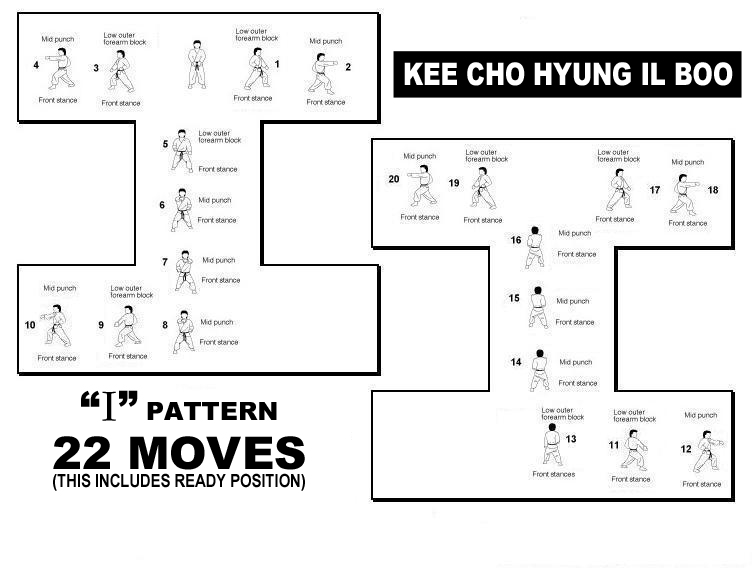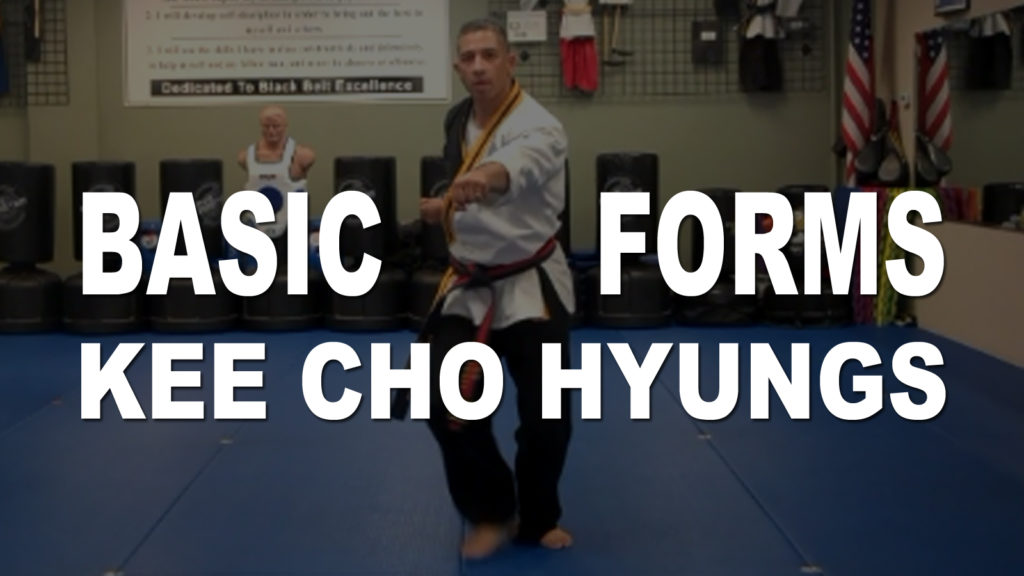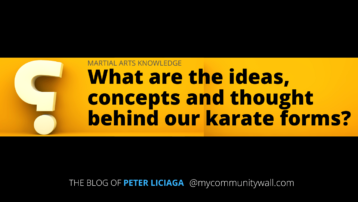The Basic Forms of Dinoto Karate Center (Tang Soo Do)
The following list includes all the traditional basic forms that were taught to me at Dinoto Karate Center by Master Michael Dinoto (Dan Ban # ) as taught to him by Master Michael Garaguso (Dan Ban # 21941) as taught to him by Master Jae Chul Shin (Dan Ban # 698 ) as taught to him by Grandmaster Hwang Kee.
Concept of the Forms (Hyungs)
For centuries martial artists have been deeply interested in learning, training and developing martial arts forms, as well as a profound desire to understand the deeper meaning of them that go beyond the movement and techniques. To be totally honest, when I first started learning forms at nine years old, I had very little interest in them. All I wanted to do was fight (which is probably why I got my butt kicked much of the time!) However, as I matured I have found the value in forms.
Training and conditioning the body is the beginning of martial arts and prepares you for the challenges in life, be it physical, emotional or mental. Initially, when it comes to actual self-defense or hand-to-hand combat situations, forms do not seem to be a necessary part of martial arts. However, in my experience, practicing forms is a great discipline to perfect your ability to improve your techniques fluidly and without thought. And this is fundamental to creating a flow in your body making the use of your techniques more effective.
Basic to all martial arts is after the basic techniques and movements are learned, they are applied to and transformed into forms. Over millenniums, martial arts masters created traditional and clearly defined sets of blocks, punches, kicks, jumps and thrusts into series of forms.
The basic forms at Dinoto Karate Center have a purpose and unites the martial artists training there. The basic forms consists of one block, one strike and a turn. The pattern is designed to develop breath & body control along with balance, power and speed. As the martial artist progress in their training, they will learn forms that increase in challenge and complexity. A form will take years of practice and intense concentration to master. Perfect form, mastery of oneness in mind, body and spirit is an art. The form, however, is not the whole martial art in itself.
As an exercise and discipline, forms are an important part of the progression in martial arts which conditions the mind, body and spirit and is great preparation for the stresses of life’s every day challenges.
The elements that make up a form are as follow:
- Form Sequence – the proper and correct sequence of moves in the form.
- Power Control – self-control in the release, restraint and relaxation of explosive energy of focused power.
- Tension and Relaxation – mastery of breathing and timing in the accumulation and release of energy and/or power.
- Speed and Rhythm Control – coordination and patterning the moves and movements appropriate to the sub-sequences within the form.
- Direction of Movements – certainty of balance and confidence of step in changing direction.
- Spirit and Attitude – evidence of a sense of calm and humility based on self-awareness and dedication to the “perfect” form.
- Power of Technique – Rigor and strength of moves equally represented in the power of attack and defense.
- Understanding Form Technique – demonstration in the form that the sequence of moves has been internalized and flows with the naturalness and ease of reflex responses without the interruption of conscious thought.
- Distinctive Features of the Form – having the ability to demonstrate the form so that the observer has a vivid awareness of the specific kinds of attacks and of the number and direction of attackers for which a particular form is designed.
- Perfect Finish – as additional evidence of concentration and control, the last move of the form ends at the starting point of the form and then remains frozen or fixed there until signaled by the senior instructor.
- Precision of Movements – accuracy in the execution of each move reflects mastery of the coordination of balance, distance, power, ability and control.
- Attention and Intention – direction and concentration of your attention upon points of power. The intent in the eyes communicate both a determination to defend against attack and a predetermined plan or deliberate design for defense. And the eyes anticipate the intended direction of moves by quick shifts and then concentration of focus on the point of power.
In learning a new form,
- Develop a general understanding of the overall pattern of flow of the form.
- Master the individual movements.
- Learn to integrate those movements into the proper sequence.
- Concentrate on the rhythm (slower or faster, etc)
- Concentrate on your breathing control, tension and relaxation.
- Learn the mental significance and intended meaning of the form.
Patience is key. Be patient.
Basic Forms
There are three basic forms.
Names: 1. Kee Cho Hyung IL Boo; 2. Kee Cho Hyung E Boo; 3. Kee Cho Hyung Sam Boo
The Ki Cho forms were created in 1947 by Grandmaster Hwang Kee, founder of the Moo Duk Kwan in Korea. The words Ki Cho mean “First Energy” conveying “basic”. The diagram of the form resembles the capital letter I.

All turns are toward the center of the form’s diagram. In general all forms, not just Ki Cho Huyng, are performed starting in Choon Be Jaseh (ready position) facing South. There are 22 movements in each Ki Cho Hyung including the Choon Bee Jaseh at the beginning and end of the form. The concepts mentioned above will be learned as a result of continued practice of Ki Cho Hyung. However, the concepts below are a great starting point::
- Stepping and turning in a front stance
- Basic understanding of defensive and offensive hip twist
- Proper frame for basic blocking and proper fist for punching.
- Good chamber hand discipline.
- Improved awareness through eye focus
Kee Cho Hyung IL Bo / Basic Form One
Kee Cho Hyung E Bo / Basic Form Two
Kee Cho Hyung Sam Bo / Basic Form Three



